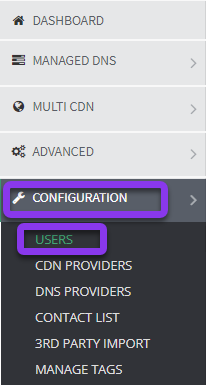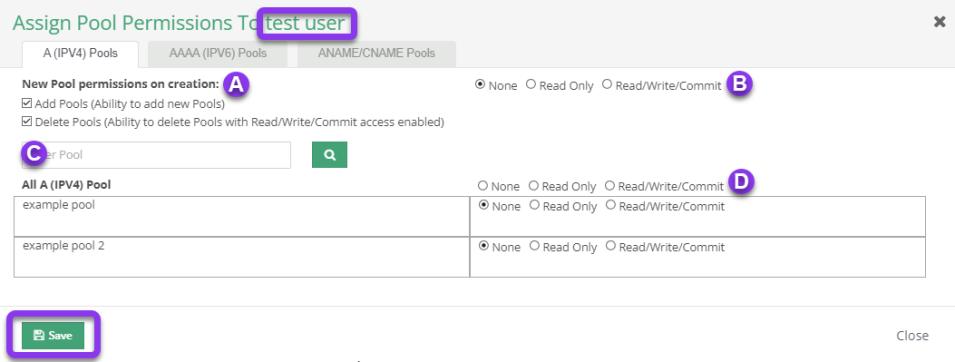
Knowledge Base
Pool Permissions
Constellix allows account administrators to customize domain-level permissions by user. In this tutorial, we will walk you through the process of configuring DNS pool permissions.
Common Use Case for Setting Pool Permissions
Unlike many providers, Constellix lets you fully customize which features and configurations your users can access. Specifying permissions increases accountability and prevents accidental errors.
Prerequisites
- A domain has been added to your account
- You have or will be configuring pools for your domain
- You have already created at least one user for your Constellix account
How to Configure Pool Permissions in Constellix
1. Navigate to Configuration
After logging in to your Constellix account, navigate to the DNS portal and click on Configuration in the left-hand menu to expand options. Next, select the option for Users.

2. Select Pools in the Permissions Column
You should now be on the Users page. Click on the link for Pools (at the far right side of the page) beside the username of the person you need to edit.
Note: The account administrator’s pool permissions cannot be changed and will be grayed out.
3. Edit Pool Permissions
After selecting Pools, the Assign Pool Permissions window will pop up. The user’s name will be at the top in green so that you can easily verify that you are editing the correct user’s permissions.
Note: There are three permissions options available: A (IPv4) Pools, AAAA (IPv6) Pools, and ANAME/CNAME Pools. For example purposes, we will be using A (IPv4) Pools, but the same steps apply to all options.
a) New Pool permissions on creation: Choose whether the user has the option to add or delete pools. Just click the box next to the appropriate option for this particular user.
b) Privileges: Specify whether the user will have Read Only, Read/Write/Commit, or no permissions. None is selected by default.
c) Search: If you are configuring access for a specific pool, you can search for the pool by name.
d) Privileges for all A (IPv4) Pools: If you want to apply the same access to all pools in the list, you can do so by selecting the appropriate radio button from the options directly above the individually listed pools.
e) Privileges for Select Pools: If you want to customize privileges for each pool, you will need to select the option you want beside each pool listed (set to None by default).
Once you have configured all permissions for the user, click the green Save button at the bottom left of the window. To add or remove permissions for another user, repeat steps 2 through 3.
Visit our website for more information on our services and features.



